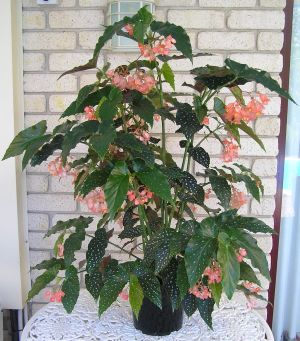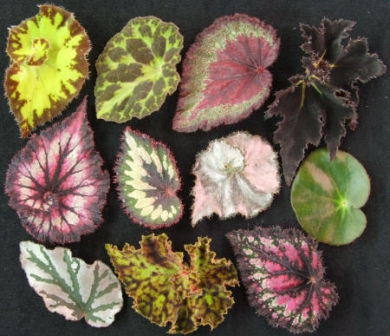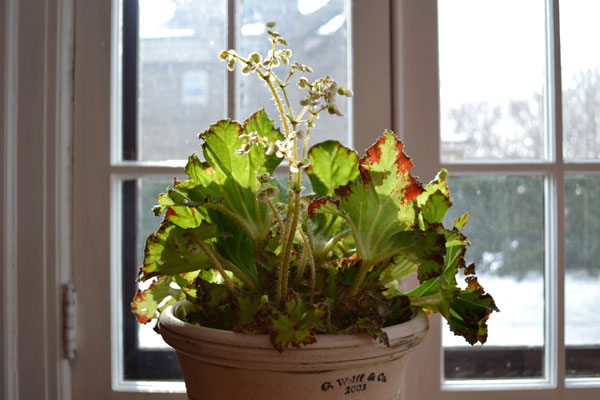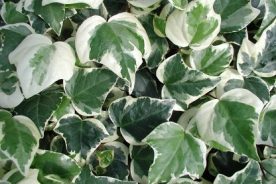Begonias, named in honor of a French botanist, have been cultivated for hundreds of years with roots in both tropical and subtropical climates. Relatively easy to hybridize, these warm-weather loving plants have been promoted in numerous forms from rexes and shrubs to semperflorens.
Enthusiasts considering the addition of begonias to their home, lawn, office or garden collections will be happy to learn that these hearty plants have the potential to brighten both indoor and outdoor environments year-round, depending on variables related to species and climate.
This article is intended to shed light on some best practices in the context of begonia cultivation while learning to properly identify, successfully grow and adequately maintain a variety of flowering or foliage plant types within a widely popular family.
How do I identify a begonia plant?
The identification of begonia plants begins with an understanding that this particular family comprises approximately 1,500-1,800 species and a diverse range of hybrids. The Big Begonia Revival asserts that it was 1777 before the first living specimen reached European shores. The ancestry of begonias has been tied by some all the way back to cultivation on Chinese soil in the 14th century.
Flowering begonias–grown the majority of time as annuals–are available in numerous varieties and make for terrific additions to the garden with colors ranging rom white to red, orange, yellow and pink. Typically used to add temporary floral color, flowering begonias may be grown over the summer in an outdoor garden.
Foliage begonias, which prefer bright but indirect light, are known for beautifully colored leaves and unique markings. Some are pale while other leaves are dark green. These types of begonias usually flower sometime between mid-winter to late spring, are well suited for indoor containers, and appreciate partially shaded environments. Many types of decorative foliage-type begonias also boast flowers.
Begonias have been grown in terrariums, hanging baskets, container gardens, and boxes on kitchen windowsills. Mature plant sizes can range from a few inches to more than 12-foot tall.
What are some of the various types of begonias?
Tuberous begonias are extremely popular bedding plants. They can be started in early spring, until the threat of frost subsides, and it is appropriate to move them outdoors. This is achieved in part by placing tubers in shallow flats, out of direct sunlight.
The flowers of tuberous begonias grow from approximately 1/2-inch wide to 4-inches wide. The trailing types of this ornamental species have been known to thrive on display in hanging baskets, providing a burst of color in winter at the same time other plants lie dormant. They can put on an especially sensational display in summer and autumn.
Wax begonias, the most common bushy-type, is generally grown outdoors as an annual in the summer. According to Clemson University Cooperative Extension, these plants can be dug up and potted in autumn with the intention of transporting indoors for the winter. Less common varieties, such as the fuchsia and elephant ear, may require a somewhat higher degree of skill to cultivate successfully.

OLYMPUS DIGITAL CAMERA
Cane-stemmed begonias are among the easiest type to care for. They sport red, white or pink flowers, and sometimes feature leaves likened to the shape of an angel’s wings. Non-pruned varieties can grow up to 10-foot tall. Clemson draws attention to the Dragon Wing when referring to a cane-stemmed begonia that is equally as popular to grow in hanging baskets or containers.
The leaves of foliage begonias grow into a variety of shapes, including hearts, stars and ovals, and are available with a gamut of unique textures. Foliage begonias love humidity so spraying the air around these plants can help them thrive while maintaining an adequate temperature that doesn’t fall below 55 degrees at night. Leaf sizes typically fall in the 1/2-inch to 1-foot range.
Among hybrids, the rex–in a class known as “fancy leaved” begonias–has been hailed among the most striking examples with patterns made up of brilliant red, green, pink, gray, purple and silver hues.
What should I do with my begonia plant in the winter?
Given that freezing weather conditions can kill begonias, it is imperative in cold-weather regions to dig them up prior to the formation of frost, and replant on a seasonal basis. By wintering over begonias indoors, even growers in northern climates can make the experience of growing and cultivating begonias last year-round.
Clemson suggests that flowering houseplant begonias should be exposed to some direct sunlight, noting that many cane- and shrub-type flowers can benefit from several hours of winter sun.
At the same time, some experimentation may be required when searching for the ideal ratio of light and shade as the appropriate amount of each depends on variety. Take care because some begonias will burn when exposed to high intensity sources of light.
The American Begonia Society suggests placement near an east, west or south, as opposed to north-facing, window. When working with terrariums, it is further recommended that–given begonias planted in these containers require less light–it should never be placed in direct sun.
What is the best way to plant a begonia?
In regard to watering, begonia plants tend to prefer well-drained soil that is given adequate time to dry between watering. A soilless potting mix, made up of peat moss, along with a healthy dose of vermiculite and perlite, is ideal for begonias that are grown indoors, regardless of pot type. A self-watering pot, according the society, may be the way to go. It is equally as important to avoid over-potting begonias plants, taking care to choose a pot that is appropriately sized (i.e. not too big) for the root ball.
The soil should be kept as evenly moist as possible, with a reduction of watering in winter and continual avoidance of overly wet or waterlogged soil. The application of a balanced liquid fertilizer, according to Clemson, is appropriate when the plant is in full growth–at half strength and at alternate waterings. Begonia plants should never be allowed to rest in a saucer of water.
Cut back on watering begonias over the winter. Tubers, which go dormant in the fall and winter months, can, with proper care, also be restarted or replanted in spring.
What other care do begonias require?
Gardening Know How draws attention to special care required for wax begonias, including pot-grown plants that should be transported indoors for winter. A delicate touch is required to unearth in-ground plants before carefully transplanting them into containers and bringing wax begonias inside at the first sign of light frost.
It is recommended that these particular plants be inspected or potentially treated for insects and “powdery mildew,” respectively. Position the plants near a sunlit window, gradually reducing light as they adjust to their new environment. A freelance contributor to The Dallas Morning News states that the health of begonias may be improved by using a small fan to increase airflow.
During the summer, flowering begonias should be moved outdoors with special attention paid to choosing a partly sunny spot, with the exception of types of plants that–due to a lack of resilience to direct sunlight–should instead be positioned in the shade.
It has also been suggested, with the intention of encouraging side branching and increasing overall fullness, that long stems of flowering begonias should be pinched back to promote lateral growth. To achieve the best outcome, repot rex angel wing begonias annually.
Finally
While begonias are a plant that requires some maintenance to keep them growing throughout the summer and the cold winter months, they are a beautiful addition to any backyard garden or flower pot. With such a wide variety of colors, sizes, and shapes even the most beginning plant lover will be able to find a place for one of these plants either indoors or outdoors in a colorful floral display.













No Comments